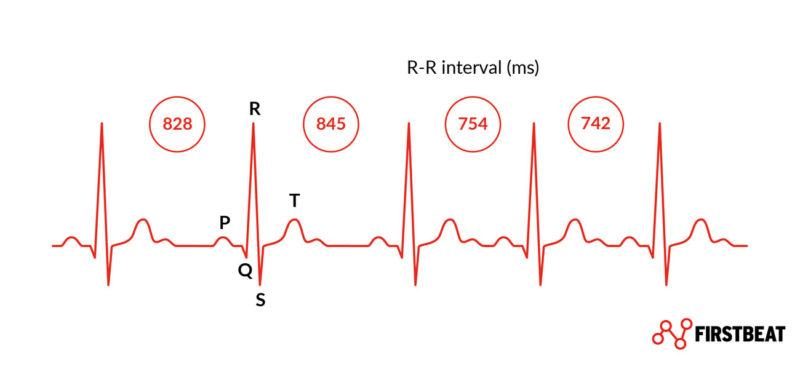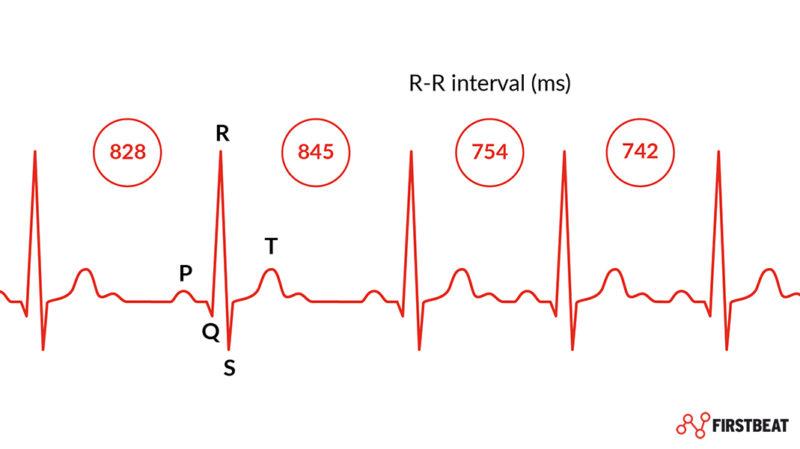
Physiology at Firstbeat
How to Analyze Stress from Heart Rate and Heart Rate Variability?
Introduction
Heart Rate Variability (HRV) is a physiological measure of the variation in time between heartbeats. It is a non-invasive and easily accessible measure of autonomic nervous system activity and has been shown to be a strong predictor of overall health and well-being.
What is HRV?
HRV is the measurement of the variation in time between consecutive heartbeats, also known as the R-R interval. It provides information about the balance between the sympathetic (fight-or-flight) and parasympathetic (rest-and-digest) branches of the autonomic nervous system.

Heart rate variability (HRV) means the variation in time between consecutive heartbeats.
Why is HRV Important?
HRV is a valuable tool in understanding a person’s physiological state and can provide insight into various aspects of health, including stress levels, physical fitness, and sleep quality. Low HRV values can be indicative of high levels of stress or poor physical condition, while high HRV values can be indicative of a relaxed and well-rested state.
A variety of physiological phenomena affect HRV, including:
- Inhalation and exhalation, control of breathing
- Autonomic Nervous System (ANS) adjustments
- Hormonal reactions
- Metabolic processes and energy expenditure
- Physical activity, exercise and recovery from physical activity
- Movements and changes in posture
- Cognitive processes and mental load
- Stress reactions, relaxation, and emotional reactions
How is HRV Measured?
HRV can be measured using a heart rate monitor or an electrocardiogram (ECG). With Firstbeat Bodyguard 3 sensors you can record RR-intervals, ECG and/or 3D acceleration based on your requirements. The sensor uses clinically approved medical electrodes to monitor ECG-based beat-to-beat heart rate data (RR-intervals). This is the “gold standard” for heart rate variability (HRV) monitoring used in clinical settings.
Applications of HRV
HRV has a wide range of applications in various fields, including sports performance, stress management, and medical research. In sports, HRV can be used to monitor training load and recovery, allowing athletes to optimize their training programs. In stress management, HRV can be used as a tool to help individuals identify and manage stress in their lives. In medical research, HRV has been used to study various conditions, including cardiovascular disease and sleep disorders.
Firstbeat HRV Applications:
Conclusion
In conclusion, Heart Rate Variability (HRV) is a powerful tool in understanding the physiological state of an individual and can provide valuable insights into various aspects of health and well-being. By measuring HRV, individuals can make informed decisions about their physical activity and stress management, leading to improved overall health and wellness.
Related Articles

